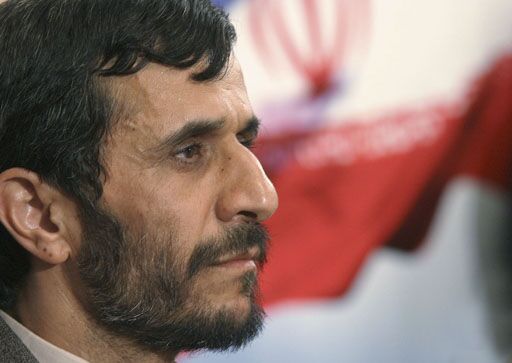
New Iranian President Is a Man With a Mission
A stunning election upset June 24 produced a new president, cast in the image of the ruling religious regime. With about 60 percent of eligible voters participating, the hardline Mahmoud Ahmadinejad won in a landslide: 61.7 percent of the votes, compared to 35.9 percent for his rival in the two-man runoff, Hashemi Rafsanjani.
Regarded as the most anti-Western of all the candidates, the new president, age 49, is a child of the Iranian Revolution. He took part in the takeover of the U.S. Embassy in 1979, served as an instructor of militia groups and as a commander of the Islamic Revolutionary Guard Corps (the group responsible for Iran’s missile and nuclear weapons programs), and volunteered in the basiji, the state-sponsored militia that stringently enforces codes of conduct and dress for women.
Ahmadinejad’s victory convincingly ended Iran’s dalliance with a slightly softer, more secular government, represented by President Mohammad Khatami. By eliminating over a thousand potential presidential candidates and possibly rigging the vote itself, Iran’s clerical rulers got themselves just the man they wanted. It makes complete the conservatives’ control over the nation’s two highest elected offices, after pulling similar strings last year to regain control of the parliament from reformists.
Of course, in the theocratic republic of Iran, the real power rests not with elected officials, but religious leaders. Under Iranian law, the Ayatollah Khamenei can override the president on any action he wishes. The 12-member clerical Guardian Council can scrap any decision of the elected parliament. Islamic leaders head the revolutionary court, the Tehran Justice Department and the special court for the clergy.
That’s just fine with Ahmadinejad. In his victory speech, he highly praised the government structure that makes him, and all elected officials, accountable to the religious rulers. “Religious democracy is the only path toward human prosperity and it’s the most advanced type of government that humans can ever have,” he said.
Western governments, particularly the United States, criticized the election as being fraudulent. The opacity of Iran’s election process makes it difficult to determine to what degree the outcome actually reflects the will of the Iranian people. But in the end, it doesn’t matter: Ahmadinejad clearly reflects the will of the mullahs. His taking office is a strong indication of their urgency in attaining their goals.
Since the 1979 revolution that made Islam the supreme source of political doctrine, Iran’s chief strategic aim has been to dominate the Middle East—in particular, by serving as a model to Muslims worldwide of Islamic national rule.
Ahmadinejad, after his victory, signalled his sympathy with this goal. “My mission,” he said, “is creating a role model of a modern, advanced, powerful and Islamic society.”
With the mullahs smiling down on their new president, the Trumpet expects the country to move significantly in this direction under his leadership. Our booklet The King of the South explains where this most crucial Islamic country fits within the prophetic context of end-time events.
